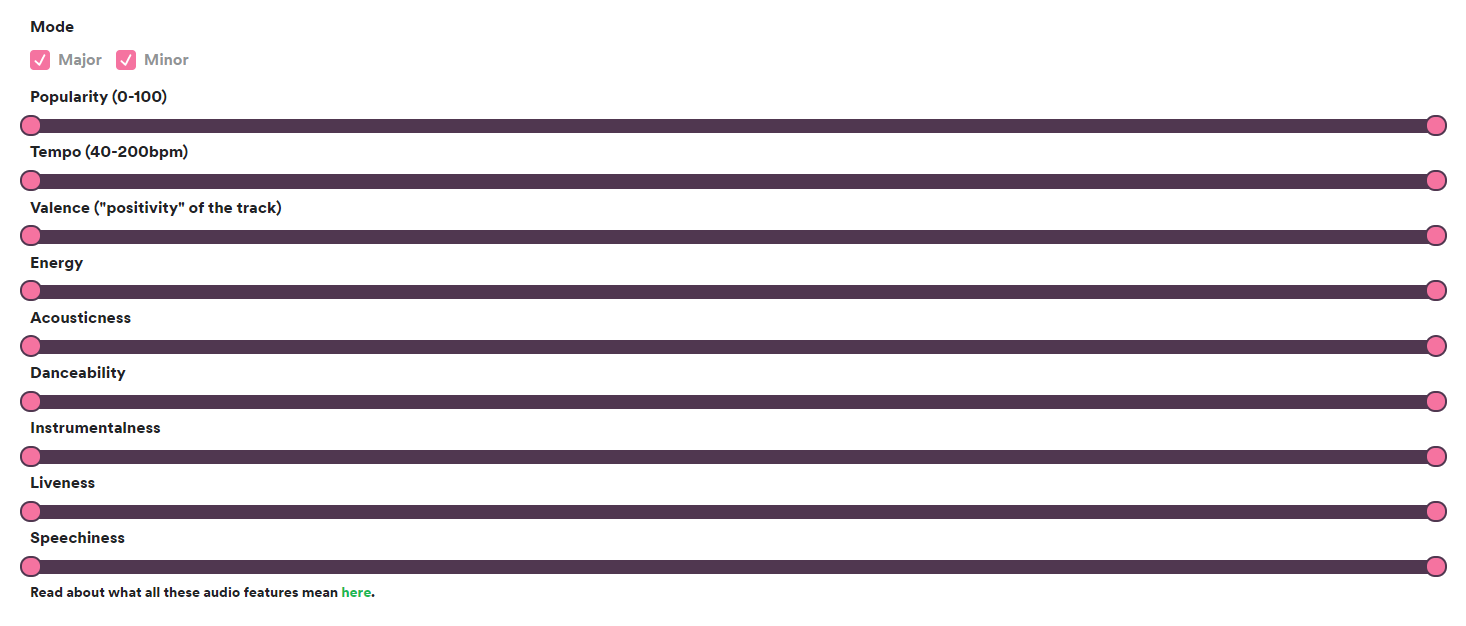Tell Spotify the type of music you want recommended with Nelson
Customise your own recommended playlists with this tool and discover exactly the new music you’ve been looking for.
A new ‘Glitch Project‘ allows you to decide the sort of music you want Spotify to choose for you, based on your listening history. The Glitch tool named Nelson lets you decide how popular you want the music to be, select it’s tempo, the positivity of the track, it’s energy, how acoustic the track sounds, whether you can dance to it or not, and so much more.
Spotify have been lauded for their algorithmic recommendations based on what you listen to and what similar listeners like. Spotify’s Discover Weekly playlist brought their streaming service a lot of fans, offering up a selection of recommended tracks every week which was surprisingly effective at actually providing tracks listeners liked and introducing them to new music.
You will need to have a Spotify Premium account to be able to use the playlist creator tool but if you do it’s certainly worth a try. Be warned, although the recommendations might be more specific they won’t necessarily be as enjoyable for you as Spotify’s own curated recommendation playlists. You can give it a go here.
Here is how each parameter affects the outcome, from Spotify’s developer blog:
Acousticness: A confidence measure from 0.0 to 1.0 of whether the track is acoustic. 1.0 represents high confidence the track is acoustic.
Danceability: Describes how suitable a track is for dancing based on a combination of musical elements including tempo, rhythm stability, beat strength, and overall regularity. A value of 0.0 is least danceable and 1.0 is most danceable.
Energy: Energy is a measure from 0.0 to 1.0 and represents a perceptual measure of intensity and activity. Typically, energetic tracks feel fast, loud, and noisy.
Instrumentalness: Predicts whether a track contains no vocals. “Ooh” and “aah” sounds are treated as instrumental in this context. Rap or spoken word tracks are clearly “vocal.” The closer the instrumentalness value is to 1.0, the greater likelihood the track contains no vocal content. Values above 0.5 are intended to represent instrumental tracks, but confidence is higher as the value approaches 1.0.
Liveness: Detects the presence of an audience in the recording. Higher liveness values represent an increased probability that the track was performed live. A value above 0.8 provides strong likelihood that the track is live.
Speechiness: Speechiness detects the presence of spoken words in a track. The more exclusively speech-like the recording (e.g. talk show, audio book, poetry), the closer to 1.0 the attribute value. Values above 0.66 describe tracks that are probably made entirely of spoken words. Values between 0.33 and 0.66 describe tracks that may contain both music and speech, either in sections or layered, including such cases as rap music. Values below 0.33 most likely represent music and other non-speech-like tracks.
Tempo: The overall estimated tempo of a track in beats per minute (BPM). In musical terminology, tempo is the speed or pace of a given piece and derives directly from the average beat duration.
Valence: A measure from 0.0 to 1.0 describing the musical positiveness conveyed by a track. Tracks with high valence sound more positive (e.g. happy, cheerful, euphoric), while tracks with low valence sound more negative (e.g. sad, depressed, angry).
